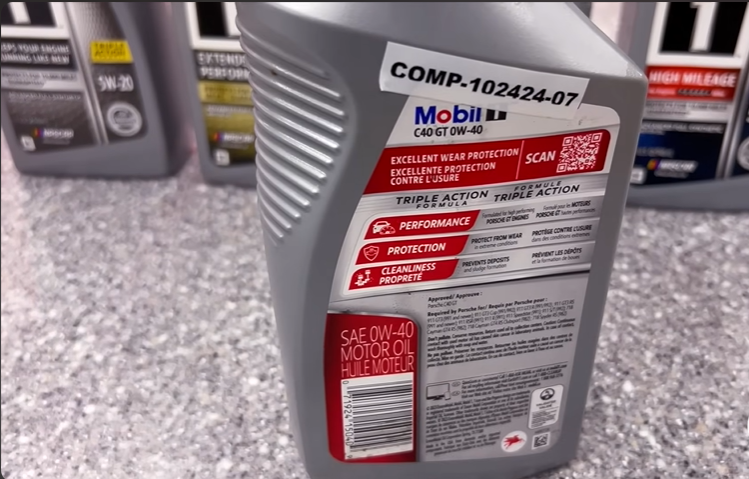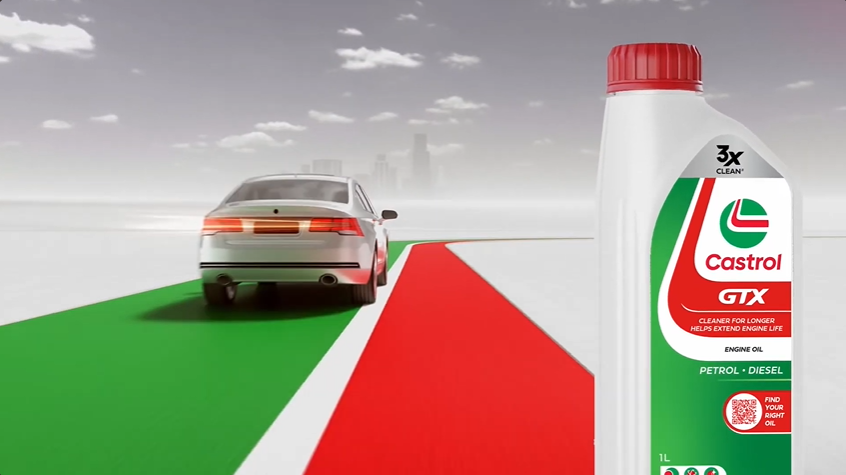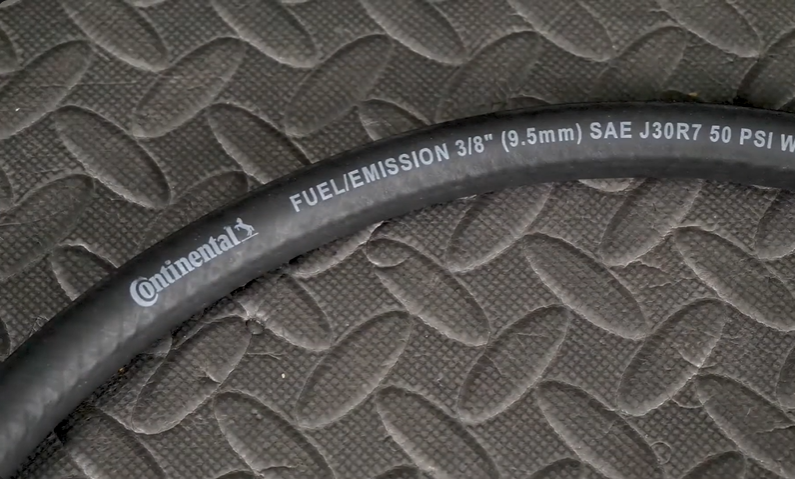If your oil drain plug is leaking, you’ll need to fix it as soon as possible. The most likely cause of a leaking oil drain plug is a damaged or stripped threads. To fix this, you’ll need to remove the old drain plug and install a new one.
Be sure to use the correct size and type of drain plug for your vehicle.
- Place a rag or paper towel over the drain plug to prevent oil from making a mess
- Unscrew the drain plug using an appropriate sized wrench or socket
- Clean the area around the drain plug and inspect it for damage
- If necessary, apply a thread sealant to the threads of the drain plug
- Screw the drain plug back in hand-tight before tightening it with a wrench until snug

Why is Oil Dripping from My Oil Plug?
If you notice oil dripping from your oil plug, it’s important to take action right away. If left unchecked, this can lead to serious engine damage. There are a few reasons why oil might be dripping from your oil plug.
One possibility is that the gasket or seal around the plug is damaged or worn out. This can happen over time as the gasket deteriorates due to heat and age. Another possibility is that the threads on the plug are stripped, which would also cause a leak.
If you think either of these might be the issue, it’s best to take your car to a mechanic for an inspection. They’ll be able to tell for sure what’s causing the leak and make the necessary repairs. In some cases, simply replacing the gasket or seal will do the trick.
But if the threads are stripped, you may need to have the entire plug replaced. Either way, it’s important to fix this problem as soon as possible so that further damage doesn’t occur. Ignoring a leaking oil plug can lead to big problems down the road, so don’t delay in getting it fixed!
Can I Use Silicone on Oil Drain Plug?
It is not advisable to use silicone on an oil drain plug. While silicone does have some properties that make it ideal for certain applications, it is not well suited for use with oil drain plugs. Silicone can degrade over time when exposed to oil, and this degradation can cause the silicone to break down and release particles into the oil.
These particles can then clog up the engine, leading to serious problems. In addition, silicone is not as strong as other materials, so it is more likely to strip out the threads on an oil drain plug, making it difficult or impossible to remove the plug in the future. For these reasons, it is best to avoid using silicone on an oil drain plug.
How Do You Seal an Oil Plug?
One of the most common ways to seal an oil plug is by using a rubber gasket. This type of gasket is designed to create a tight seal between the oil plug and the engine block. Another common way to seal an oil plug is by using a metal washer.
This type of washer is designed to compress when it is tightened, creating a tight seal.
How Do You Replace a Drain Plug Without Losing Oil?
If you need to replace your drain plug and are worried about losing oil, there are a few things you can do to prevent this. First, make sure that the area around the plug is clean so that the new plug will seal properly. Next, use a wrench to remove the old plug and be careful not to drop it into the oil pan.
To install the new plug, hand-tighten it until it is snug. Once the new plug is in place, use your wrench to give it an extra quarter turn. This should create a tight seal so that no oil will leak out.
How to Fix Oil Drain Plug Leak in Your Car
Oil Drain Plug Sealant
If you’ve ever had an oil leak, you know how frustrating it can be. Oil drain plug sealant is a great way to prevent leaks before they start.
Oil drain plug sealant is a putty-like substance that you apply to the threads of your oil drain plug before screwing it in.
It forms a tight seal that prevents oil from seeping out around the plug.
There are many brands of oil drain plug sealant on the market, and they’re all pretty similar. Just make sure to choose one that’s compatible with your vehicle’s oil type.
Applying oil drain plug sealant is quick and easy. Just clean the threads on your oil drain plug and surrounding area, then apply a generous amount of sealant to the threads. Screw in the plug and tighten it until it’s snug.
That’s it!
If you’re looking for an easy way to prevent oil leaks, give oil drain plug sealant a try. It could just save you a lot of headaches down the road.
Oil Dripping from Drain Plug
If you’ve ever had your car serviced, you may have noticed oil dripping from the drain plug. This is perfectly normal and nothing to be concerned about. The oil is simply draining out of the engine as it’s supposed to.
While it may seem like a lot of oil is coming out, keep in mind that engines hold several quarts of oil. So, even though it may look like a lot, it’s just a small amount relative to the total amount of oil in the engine. If you’re ever unsure about something related to your car’s maintenance, don’t hesitate to ask your mechanic.
They’ll be happy to answer any questions you have and put your mind at ease.
Drain Plug Leaking After Oil Change
If your drain plug is leaking after an oil change, there are a few things you can do to fix the problem. First, try tightening the drain plug. If that doesn’t work, you may need to replace the washer on the drain plug.
To do this, remove the old washer and replace it with a new one. Be sure to use a washer that is made of soft material so it creates a good seal. You can also try using Teflon tape or plumber’s putty around the base of the drain plug to help seal it.
If none of these solutions work, you may need to take your car to a mechanic to have them take a look at it.
How to Tell If Oil Drain Plug is Leaking
If you notice that your oil drain plug is leaking, don’t panic. There are a few things you can do to determine whether or not the leak is serious. First, check the area around the drain plug for any signs of oil.
If there is a small amount of oil present, it’s likely that the leak is not serious and can be fixed with a new gasket or sealant. However, if there is a large amount of oil present, the leak may be more serious and require further investigation. Next, wipe away any excess oil from around the drain plug and start your engine.
Let it run for a few minutes so that you can see if the leak persists. If it does, turn off your engine and investigate further. At this point, it’s likely that you’ll need to replace your drain plug Washer · Replacing an Oil Drain Plug Gasket · Repairing an Oil Leak .
The good news is that this isn’t a difficult repair and can usually be done without having to take your car to a mechanic.
Conclusion
If your car’s oil drain plug is leaking, don’t panic. There are a few things you can do to fix it. First, try tightening the plug with a wrench.
If that doesn’t work, you may need to replace the gasket or O-ring on the plug. If the leak is still bad after that, you may need to replace the entire drain plug assembly.



Leave a Reply